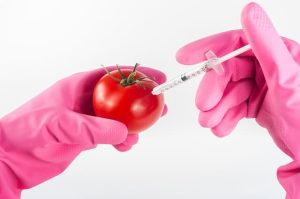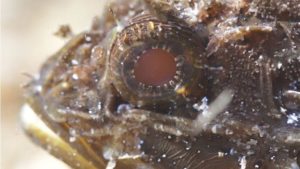Introduction
The COVID-19 disease caused by SARS-CoV-2, has caused a sudden rise in hospitalizations due to pneumonia worldwide. COVID-19 first emerged in Wuhan, China in December 2019 and due to rapid transmission worldwide, later on in March, 2020, it was declared as pandemic by WHO.
Let’s talk about some common questions first!
Is COVID-19 true?
Of Course its true! Usually bats are natural reservoir of corona viruses but due to genetic recombination and variation, SARS-CoV-2 has adapted to infect humans through intermediate hosts such as Pangolins. But there are always a lot of conspiracy theories behind anything. The problem with COVID-19 is that even if case fatality rate is low, it’s very, very contagious!
How is COVID-19 most commonly transmitted?
Its most commonly transmitted via respiratory droplets through face to face contact (especially within 6ft. range and exposure for more than 15 mins) while transmission through surface contact has also been reported.
Are Masks effective?
YES! Face masks (either N95 or surgical) provide substantial protection compared to no masks and surgical masks are better than the clothes ones. While physical distancing and personal hygiene provides substantial protection too!
What are the symptoms of COVID-19?
Most common symptoms are fever, dry cough and shortness of breath. Others include fatigue, (nausea, vomiting or diarrhea), myalgia, headache, rhinorrhea, anosmia (loss of smell), and ageusia (loss of taste).
What about PCR? Is it correct?
PCR is the typical way to diagnose but sensitivity depends on the timing from exposure and is maximum during symptoms onset and afterwards while false negative tests depends on the adequacy and source of sample and the equipment quality. So actual diagnosis is made by combining the clinical history, lab results and imaging.
What are the current treatments for COVID-19?
Its mainly supportive therapy with Oxygen and ventilators. Prone positioning, PEEP and low tidal volume strategies tend to help. Dexamethasone has shown to decrease mortality while Remdesivir has shown to reduce the time for recovery. Other options include Hydroxychloroquine, antivirals (favipiravir), immunomodulators (tocilizumab, Anakinra), anticoagulants (Heparin), convalescent plasma, antifibrotics (imatinib) etc.
Prevention and Vaccine Development
COVID-19 is a potentially preventable disease. Benefits are shown from epidemiology. Multiple measures have been implemented which includes personal actions (hygiene, distancing), case and contact identification, government issued regulatory actions (closure of school, workspace etc.) and international measures (flight control). The key issue is to find the appropriate strategies which will reduce the societal and economic burden while controlling the case until vaccine is developed.
No vaccines for COVID-19 is currently available but approx. 120 candidates are under development while more than a dozen candidates are tested under phase I-III trials. Approaches includes (Nucleic acids, inactivated or live attenuated virus, viral vectors and recombinant proteins). The hurdles for the vaccine development includes technical barriers, feasibility of largescale production and legal issues. Its not clear whether S protein or the receptor binding domain will confer better immunity; need of adjuvants; duration of protection and thus the doses required and many more.
Presentation and Findings
Among patients hospitalized with COVID-19, 74-86% are aged at least 50 years with male preponderance of 60%. In a study in China, it was found that 81% patients developed mild manifestations, 14% severe and 5% critical (defined by respiratory failure, septic shock and multi-organ dysfunction). While approx. 60-90% of hospitalized presents with comorbidities like HTN, Diabetes, Cardiovascular disease, Chronic lung disease, CKD, malignancies and liver disease. The most common symptoms are mentioned above while the common complications are hypoxemic respiratory failure, cardiac dysrhythmias, acute kidney injury, liver dysfunction, coagulation dysfunction and septic shock.
Diagnosis is typically made based on PCR, clinical history, Lab findings (common findings are lymphopenia, elevated ESR and CRP, prolonged PT, thrombocytopenia, elevated D-dimers etc.) and Imaging (common findings are bilateral lower lung lobes infiltrates on CXR and peripheral ground glass appearance on CT).
Pathophysiology
Coronaviruses are large, enveloped ssRNA viruses found in humans and other mammals causing respiratory, GI (Gastrointestinal) and neurological diseases. SARS-CoV-2 has 60-140nm diameter and distinctive spike protein which attacks the nasal and bronchial epithelial cells and pneumocytes. It binds to Angiotensin Converting Enzyme II (ACE 2) present in pneumocytes type 2, cleaved by the serine proteases and thus enters the host cell. Afterwards profound lymphopenia can occur due to virus attacking lymphocytes as well as lymphocyte apoptosis due to activated innate and adaptive immunity.
In later stages, the endothelium becomes leaky resulting in infiltration of monocytes and neutrophils giving rise to pulmonary edema and ground glass appearance on CT. Later on, hyaline membrane develops compatible with ARDS. Collectively, endothelial barrier disruption, impaired O2 diffusion and decrease diffusion capacity of lungs are the characteristics of COVID-19.
In severe cases, fulminant activation of coagulation system occurs resulting in DIC and multiorgan failure. In addition, microthrombi forming in lungs and systemic circulation due to viral sepsis may result in limb ischemia, stroke and MI (heart attack). Also, injury to kidney results in creatinine elevation and injury to the liver results in the elevated ALT and AST.
Conclusion
As of 13th Oct.2020, more than 38 million people have been reportedly infected and more than 1 million deaths have occurred while WHO suspects that at least 10% of the world population have been infected. Many aspects of pathophysiology and treatment remains unclear. Until vaccines are developed, public health measures are the only ways to prevent. Further information requires basic and clinical investigations and public health interventions.
Citation to Original Paper
Wiersinga WJ, Rhodes A, Cheng AC, Peacock SJ, Prescott HC. Pathophysiology, Transmission, Diagnosis, and Treatment of Coronavirus Disease 2019 (COVID-19): A Review. JAMA. 2020;324(8):782–793. doi:10.1001/jama.2020.12839
Was this summary helpful? Let us know in the comments section.
Also, do not forget to check our other research summaries and general blogs.








